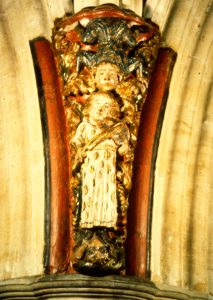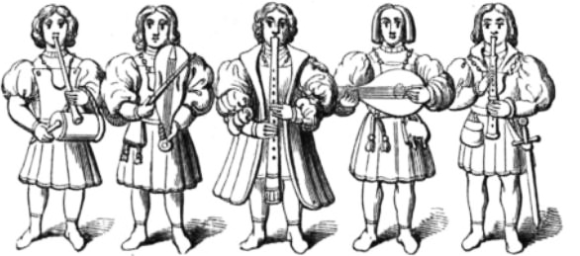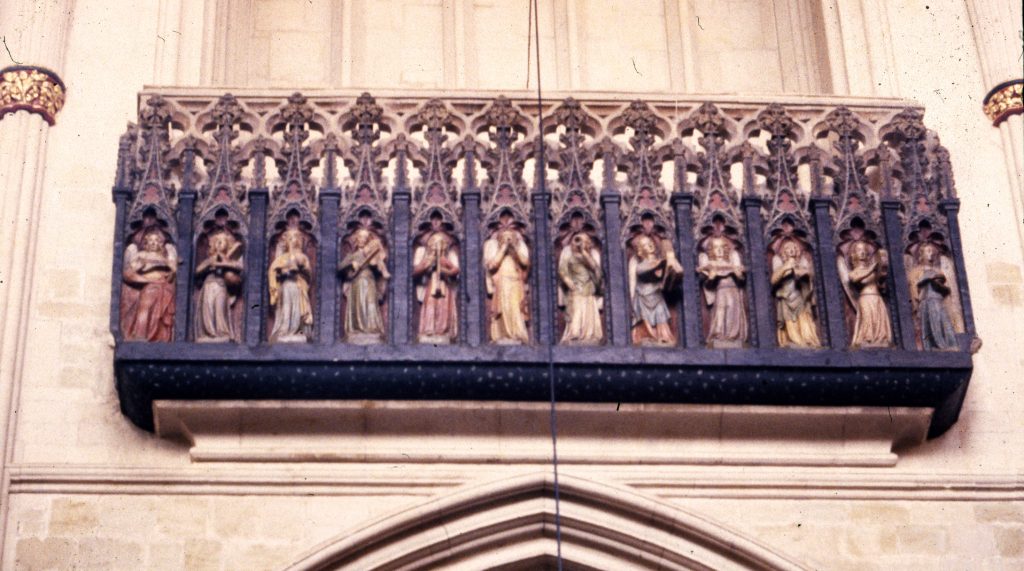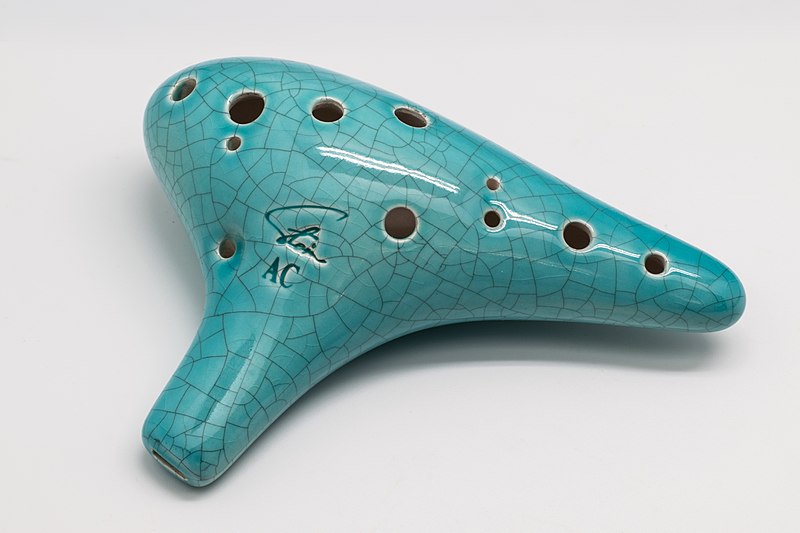 Greetings again and thanks for joining us as we continue examining topics which arise in Usurper’s Curse, the seventh book in my Lady Apollonia West Country Mysteries Series. During this new year, I will be posting monthly and this time, I am writing of medieval minstrels who make an important appearance in my story.
Greetings again and thanks for joining us as we continue examining topics which arise in Usurper’s Curse, the seventh book in my Lady Apollonia West Country Mysteries Series. During this new year, I will be posting monthly and this time, I am writing of medieval minstrels who make an important appearance in my story.
The term “minstrel” came into use in the 13th century for an entertainer, that is: a juggler, an acrobat, a singer, or even a fool. However, as early as Anglo-Saxon England, there were professional poets who sang their own poems. Minstrels mainly performed, sang, and played music but also told tales and poetry. These versatile entertainers could also perform acrobatics, juggling, and dancing. The picture on the left shows the tumbler corbel in Exeter Cathedral in which an upside-down tumbler is atop a viol player, seeking to entertain the baby Jesus and his mother, Mary, who are depicted in another Exeter corbel just opposite them in the nave. These minstrels believed that their talented performance was the greatest gift they could give to the newborn child and his mother.
Minstrel singers performed songs telling stories of distant places and events, both imaginary and historical. Some of the instruments they used are shown above in a woodcut of the Beverley Minstrels. From left to right, the instruments they are playing are area pipe and tabor, a fiddle, a wind instrument, a lute, and a shawm.
All these instruments are related to modern ones, but for example, the medieval violins did not have the waist or indentations on the sides which allow freer bowing on the modern instrument. This lack of indentation can be seen in the fiddle held by the second Beverley minstrel in the drawing above as well as in the picture on the right of the fiddle from the Minstrel’s Gallery in Exeter Cathedral. This is played by the fourth angel from the left of the dozen angel musicians on the front of that gallery which is shown below.
Since a medieval minstrel was an entertainer, his costume also represented this image. Thus, it was common for medieval minstrels to wear bright multi-colored costumes and even the horses of medieval minstrels would display a colorful costume.
 Minstrels were regularly employed by royalty and nobility, while others wandered about the country to find work. It was such a troop in Usurper’s Curse that annually visited Ferdinando, the Earl of Marshfield and brother of Lady Apollonia, my heroine. This troop of five men was led by Gero Hewyn. Reg, Gero’s son-in-law, played the flute and drum. Tibur, Reg’s brother, played the shawm and ocarina while the youngest member, Kew, played the viol. The shawm was a precursor of the oboe and is played by the Beverley minstrel at the far right of the Beverley woodcut near the top of this posting. It is also played by the third angel from the right in the Exeter Minstrel’s Gallery picture. The ocarina is a modern name for a type of flute sometimes called a sweet potato flute as pictured below. Notice how its shape differs from the tubular shape of a traditional flute.
Minstrels were regularly employed by royalty and nobility, while others wandered about the country to find work. It was such a troop in Usurper’s Curse that annually visited Ferdinando, the Earl of Marshfield and brother of Lady Apollonia, my heroine. This troop of five men was led by Gero Hewyn. Reg, Gero’s son-in-law, played the flute and drum. Tibur, Reg’s brother, played the shawm and ocarina while the youngest member, Kew, played the viol. The shawm was a precursor of the oboe and is played by the Beverley minstrel at the far right of the Beverley woodcut near the top of this posting. It is also played by the third angel from the right in the Exeter Minstrel’s Gallery picture. The ocarina is a modern name for a type of flute sometimes called a sweet potato flute as pictured below. Notice how its shape differs from the tubular shape of a traditional flute.
Hope to see you again next month.
Link to license by which this picture is shown;
Attribution-Share Alike 4.0 International


